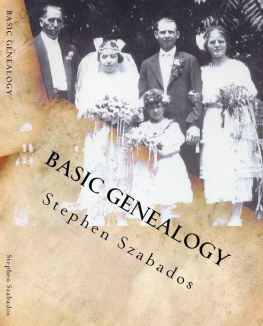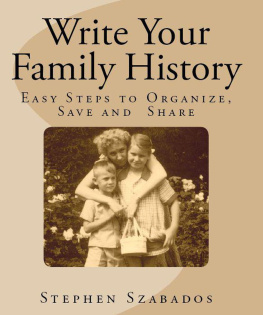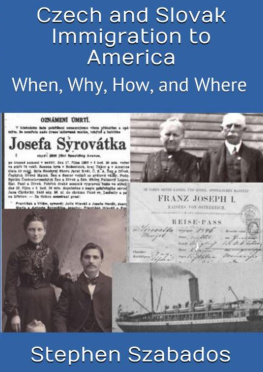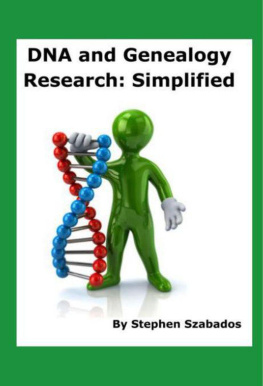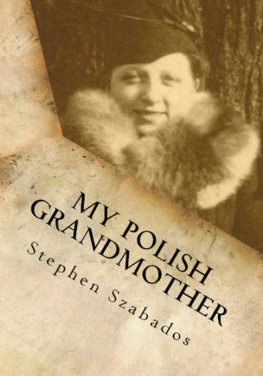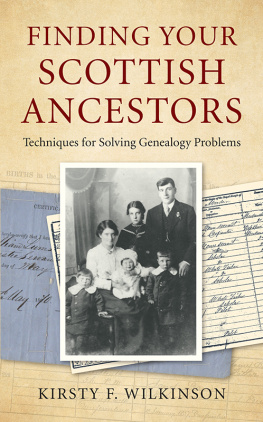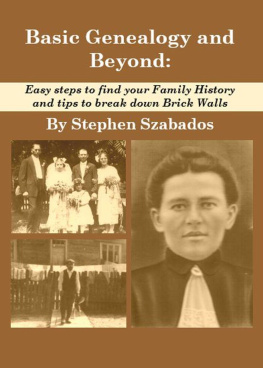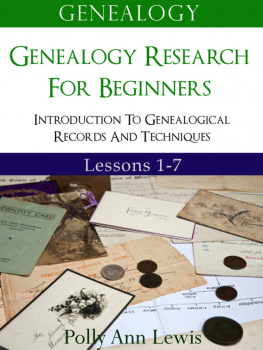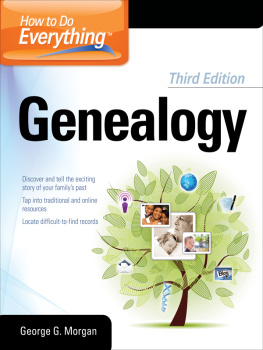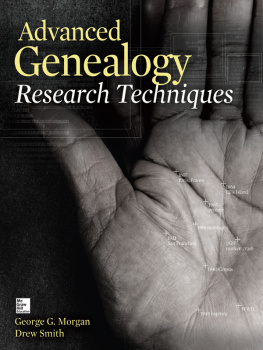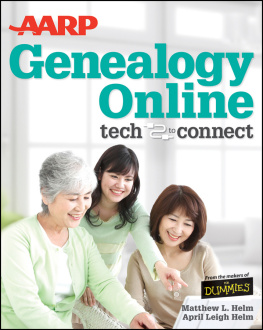Basic Genealogy: Saving Your Family History
Stephen Szabados
Published by Stephen Szabados, 2020.
While every precaution has been taken in the preparation of this book, the publisher assumes no responsibility for errors or omissions, or for damages resulting from the use of the information contained herein.
BASIC GENEALOGY: SAVING YOUR FAMILY HISTORY
First edition. June 24, 2020.
Copyright 2020 Stephen Szabados.
Written by Stephen Szabados.
10 9 8 7 6 5 4 3 2 1
T his book goes beyond the great tips I covered in my earlier book, Basic Genealogy, and gives many additional methods and sources to find more information to help create a wonderful family history of your ancestors. My new book includes the basic material from Basic Genealogy and includes new material that covers search tips, organization, an outline of steps to find where your European immigrants left, and the basics of using DNA testing in genealogy.
I want to share my successes in my genealogy research with the reader to help them enjoy more successes in researching their family history. My goal for this book is to outline the steps that I should have followed to begin my genealogical research and give tips to make everyone successful. These are the steps that I now follow. I developed my current methods after some wasted efforts learning what not to do. I know my book will prove helpful to you. Following these steps should help you to be more efficient in your beginning research than I was.
The book will give you a method to get started in your research and hopefully give you a plan to find your family history. We will cover the initial portion of genealogical research so that you will become familiar with genealogical sources. We will discuss the use of documents such as census records, passenger manifests; vital records and others that will help identify your family members and will also give you information about your family's history.
I also cover methods and sources to help find where our European immigrants left. These will be basic steps. I would suggest reading my book "Finding Grandma's European Ancestors" when you are ready to start looking for your ancestors in European records.
Now turn to Chapter One and start your journey to your family's history.
.
CHAPTER 1: Genealogy Begins at Home
Y our first steps in your genealogical research begin with the documents you find at home and writing down facts you remember about your parents, grandparents, aunts, and uncles. Also, write down the family stories that were passed along by each generation at family gatherings. You need to find all the pictures and documents that you can.
Collect the following if possible:
- Birth, baptism, marriage, and death certificates
- Obituaries and funeral cards
- Family Bibles
- Family pictures, baby books, birth announcements, wedding books, birthday books, diaries
- Passports, naturalization and immigration papers
- Land and mortgage papers
- Military papers
- Retirement papers, probate papers
- Family letters, postcards, business papers, medical records, insurance papers, newspaper clippings, and other papers
Old documents and pictures
As you lose your older relatives, search the desk drawers, file cabinets and shoe boxes for old papers to see if your ancestors saved documents. Searching for old papers is especially important if they were immigrants. If they are still alive, you need to ask what they have or ask their permission to do look at the older documents.
Baptismal or birth certificates from the old country, naturalization documents or military papers would yield extremely valuable information if found. Old letters and postcards from relatives or friends are also significant. The messages may be from friends or relatives that still lived where your ancestor was born. These documents may also contain references to where your ancestor left or the names of other family members. Pictures are also significant because they may show other people who may be friends or relatives. Identify all other possible relatives and track down their descendants to see if they have any treasures that pertain to your ancestors.
Other critical personal documents you may find are
- Family bibles that may have lists of the births, marriages, and deaths of various family members.
- Diaries that can give insight into the thoughts and interests of family members
- Newspaper clippings of births, marriages, deaths and news stories about family members.
Be prepared to find some documents that are written in languages that are not English. Some may be in the ethnic language of where your ancestors were born, or they may be in Latin recorded by the priest in the Catholic churches. Genealogists have compiled word lists of genealogical terms that list the word in English and many other languages. Many books include examples of these lists, but the most convenient source is online at Familysearch.org. Use their Wiki section and search for "word list" or "XXXX word list" where XXXX is the name of the language you need.
More documents, pictures, and letters
To find personal documents such as baptismal certificates, passports, letters, and postcards, search for the papers of your parents and grandparents. If your family saved any of the personal papers, they would be treasured because they usually list the birthplaces of the immigrant ancestors. Other relatives may have also preserved treasures. Your ancestors may have lived with one of their children before they died. If they remained in the home until they died, one or two of the children might have watched over them. These were the caregivers. Track the descendants of these caregivers who may have sorted through all of the papers and pictures in the home and saved some of them. If you find documents with other relatives, ask for copies of the documents and offer to share the results of your research. Also, be very careful with the originals since they may be very fragile due to age. Use copies or electronic scans in your research and store the originals in a safe place.
Remember at this point in your research; you are dealing with documents that you find in the personal papers of your parents, grandparents and other relatives. After you get copies of the materials, record the information and get organized. Next, you start your search for information from other sources, including interviewing older relatives, and family friends is an essential step in the process. Also remember to work on the easiest to find documentation, dates, and places first.

